from ISSMGE Bulletin: Volume 3 Issue 4 December 2009 (pp.5-7)
Views of Young Geotechnical Engineers
Young Member Award winners
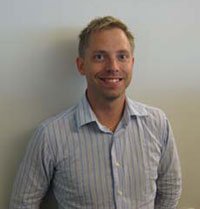 Anders Kullingsjö Sweden |
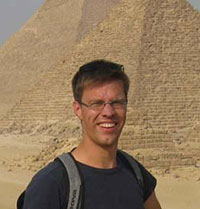 Leon van Paassen The Netherlands |
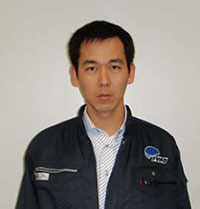 Susumu Nakajima Japan |
Young Member Award winner: Anders Kullingsjö, Sweden
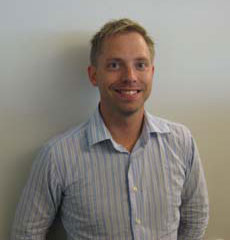 Personal history:
Personal history:
Born: 01 January 1974
‐1997, Chalmers University of Technology, Gothenburg. Master of Science – Civil Engineering.
‐2007, Chalmers University of Technology, Gothenburg, Doctor of Technology. Department of Civil and Environmental Engineering, Division of GeoEngineering Geotechnical Engineering
Experience Record:
1998‐2005 Skanska Teknik AB: Consultant Geot. Eng.
2005‐2009 Skanska Sverige AB: Manager Geot. Eng.
Present position:
Senior Manager / Specialist at Geot. Eng.
Commission of trust:
‐ Swedish Geotechnical Society, secretary in the west division 1999‐2003 and member in the election committee 2003‐2006
‐ Implementation committee of the Eurocodes in Sweden, Member of the steering committee 2005 to date
‐ Representing Sweden in ISSMGE Technical committee “Limit State Design in Geotechnical Engineering”, TC23. 2006 to date
Receiving this award is a great honour for me and an acknowledgement of that the long tradition of geotechnical engineering in Sweden still is in the forefront.
My research presented in my thesis (Kullingsjö, 2007) and in the article nominated to the YMA award, presented in the 17th ISSMGE Conference (Kullingsjö, 2009), deals with the deep excavations in soft clay and how the excavation will affect the immediate surroundings in terms of deformation. The uniqueness of my work is the close cooperation between academia and industry and that an exchange with outstanding universities in some areas made it possible to use highly advanced numerical analysis at a real case in the centre of Gothenburg. The research was divided into Class A predictions of a real case, field monitoring, laboratory testing, calibration of advanced constitutive soil models and Class B calculations with more or less advanced constitutive models.
» Read more from ISSMGE Bulletin: Volume 3 Issue 4 December 2009 (p.5)
Young Member Award winner: Leon van Paassen, The Netherlands
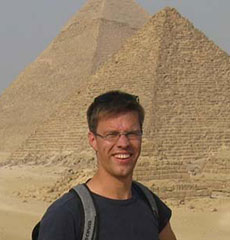 Personal history:
Personal history:
Born: 28 January 1976
Education:
‐ 2002, Delft University of Technology, MSc – Mining Engineering, Engineering Geology.
‐2009, Delft University of Technology, PhD – Applied Sciences, Environmental Biotechnology
Experience Record:
2000‐2002, IFCO Foundation Expertise BV – Junior Geotechnical Engineer
2002‐2005, GeoDelft – Advisor Foundations and Underground Constructions.
2005‐2009, GeoDelft/Deltares – R&D Smartsoils®.
2009‐now, Delft University of Technology, Department of Geotechnology –
Assistant Professor Geo‐Engineering.
Committees
2003‐2007 Treasurer Ingeokring (Dutch department IAEG/ISRM)
2008 Organising committee for 1st International Conference on BioGeoCivil Engineering
2009‐now, Editorial board Ingeokring Newsletter
It is a great honour for me to receive the Young Member Award 2009 for my publication “Scale up of BioGrout, a biological ground reinforcement method”, which I presented during the 17th ICSMGE in Alexandria, 5‐9 October 2009. In this paper I describe the experiments that were performed to develop BioGrout – a new ground improvement method based on microbially induced carbonate precipitation – from proof of principle in the laboratory to a field scale experiment, in which equipment, conditions and techniques were applied, which are also used in emphasized applications, such as increasing the stiffness of railroad embankments. First, experiments were performed in a 1 m3 container set‐up simulating a spherical injection from a single point, followed by a 100 m3 field scale experiment. In this final experiment 40 m3 of sand was biologically cemented within 12 days and 6 flushes, stretching over a distance of 5 m between three injection and three extraction points. In both scale up experiments significant increase of the average strength was obtained, but distinct spatial variability of the mechanical properties was observed. The heterogeneity is considered to be affected by the induced flow field, the distribution of bacteria, the procedure of supplying reagents (continuous flow or sequential batches) and the crystallization process.
» Read more from ISSMGE Bulletin: Volume 3 Issue 4 December 2009 (p.6)
Young Member Award winner: Susumu Nakajima, Japan
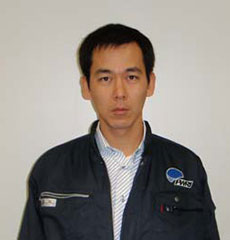 Personal history:
Personal history:
Born: 26 April 1978
Education:
‐ 2000, Tokyo University of Agriculture and Technology
‐ 2005, University of Tokyo, Master of Engineering
‐ 2008, University of Tokyo, Doctor of Engineering
Experience Record:
2003‐2007; HONMA Corporation, Japan
2008; Researcher, Public Works Research Institute, Japan
It is pleasent surprising and honor for me to be given an opportunity to introduce my research and my views of the international society, future of geotechnical engineering in the ISSMGE Bulletin.
The paper submitted to the ICSMGE2009 was on the effect of shaking history and material properties of geogrid models on the seismic behavior of the gravity type and geosynthetics reinforced soil retaining walls, which was the part of 14‐years research achievements conducted by University of Tokyo, Railway Technical Research Institute and Tokyo University of Science, Japan. This research project started at 1995 immediately after the Hyogoken‐Nanbu earthquake so as to avoid the catastrophic failure of the retaining structures observed in the earthquake.
» Read more from ISSMGE Bulletin: Volume 3 Issue 4 December 2009 (p.7)


































